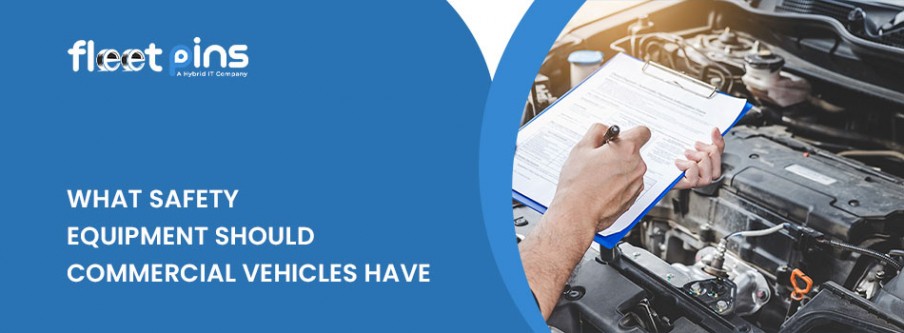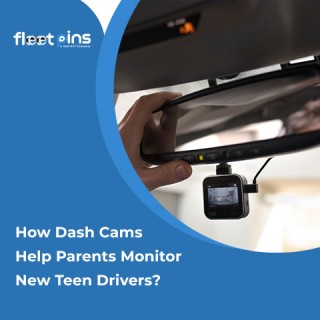
- On 2024-10-11
What Safety Equipment Should Commercial Vehicles Have?
Safety is a top priority when it comes to commercial vehicles, as they are often used to transport goods and passengers or provide essential services. To ensure the safety of both drivers and the public, commercial vehicles need to be equipped with a range of safety equipment that helps prevent accidents, reduce the risk of injury, and minimize damage.
Let’s explore the key safety equipment that all commercial vehicles should have, from basic essentials to more advanced technologies that can enhance safety on the road.
Why Safety Equipment Is Crucial for Commercial Vehicles
Commercial vehicles operate under unique conditions. They often carry heavy loads, travel long distances, and operate in busy traffic environments. As a result, they are at higher risk for accidents, breakdowns, and other emergencies. Having the right safety equipment on board not only protects the driver but also helps to ensure the safety of other road users.
Furthermore, many safety requirements for commercial vehicles are mandated by law. Failing to equip a vehicle with proper safety tools can result in fines, penalties, and liability issues in case of an accident.
Essential Safety Equipment for Commercial Vehicles
Let’s dive into Essential Safety Equipment for Commercial Vehicles:
1. Seatbelts
The most basic and essential piece of safety equipment in any vehicle is the seatbelt. For commercial vehicles, seatbelts are mandatory and must be functional at all times. Properly worn seatbelts significantly reduce the risk of injury in the event of an accident. Fleet managers should ensure that seatbelts are in good condition, properly fastened, and used by all drivers and passengers.
2. Fire Extinguisher
A fire extinguisher is a critical safety tool for commercial vehicles, especially those transporting flammable goods or operating in high-risk areas. In the event of an engine fire, electrical malfunction, or cargo fire, a fire extinguisher can prevent a small fire from becoming a major hazard. Drivers should be trained on how to use the extinguisher and ensure it is accessible and regularly checked for functionality.
3. First-Aid Kit
Every commercial vehicle should be equipped with a first-aid kit to handle minor injuries or medical emergencies. This is especially important for long-haul drivers or vehicles operating in remote areas where medical help may not be immediately available. A well-stocked first-aid kit should include bandages, antiseptic wipes, gauze, adhesive tape, scissors, and other basic medical supplies.
4. Warning Triangles and Flares
In case of a breakdown or accident, it’s crucial to warn other drivers about the stopped vehicle to avoid secondary accidents. Warning triangles and flares should be placed around the vehicle to increase visibility. These items are essential for night-time breakdowns, poor weather conditions, or when stopped on the side of a busy road.
You May Also Read: What is the Best Fleet Safety Training? Essential Components and Tips
Advanced Safety Equipment for Commercial Vehicles
In addition to the basics, advanced safety equipment can significantly reduce the likelihood of accidents and improve overall safety for commercial drivers and other road users.
Electronic Stability Control (ESC)
Electronic Stability Control (ESC) is an advanced safety system that helps drivers maintain control of their vehicle during extreme steering maneuvers. ESC reduces the risk of skidding or losing control, especially on wet or icy roads. For large commercial vehicles, ESC is particularly valuable in preventing rollovers or jackknifing, both of which can lead to serious accidents.
Anti-Lock Braking System (ABS)
The Anti-Lock Braking System (ABS) prevents the wheels from locking up during emergency braking. This allows the driver to maintain steering control, even when braking hard. ABS is a must for commercial vehicles, especially those carrying heavy loads, as it reduces stopping distances and helps prevent skidding on slippery surfaces.
Blind Spot Monitoring System
Commercial vehicles, particularly large trucks, have significant blind spots that make it difficult for drivers to see other vehicles or pedestrians. A blind spot monitoring system uses sensors and cameras to alert the driver when another vehicle enters their blind spot. This technology is crucial in preventing side collisions during lane changes or merges.
Dashcams
Dashcams are becoming increasingly popular in commercial fleets due to their ability to record driving behavior and capture incidents on the road. In the event of an accident, a dashcam provides clear evidence of what happened, which can help determine fault and reduce liability. Additionally, dashcams encourage safer driving habits by monitoring driver behavior.
You May Also Read: How Dashcams Enhance Driving Safety and Security
Equip Your Fleet with the Best Safety Technology from Fleet Pins
At Fleet Pins, our mission is to ensure your fleet stays safe and efficient on the road. We provide a comprehensive range of technology solutions designed to enhance fleet safety, including dashcams, telematics systems, and GPS tracking. These tools not only protect your drivers but also improve operational performance. Experience the full potential of our fleet management software by booking a demo with one of our experts and see how Fleet Pins can elevate your fleet safety and management.




